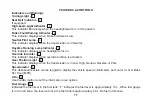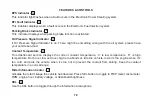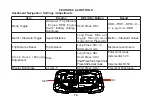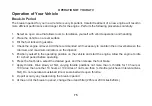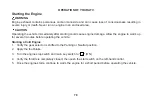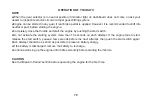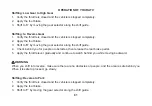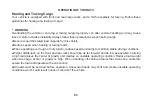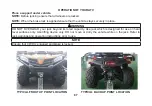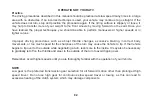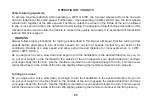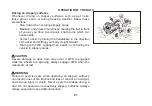
OPERATION OF YOUR ATV
85
Load Distribution
Your vehicle has been designed to carry or tow a certain amount of load. Always read and understand the
load distribution warnings listed on the warning labels, and never exceed the specified weights. Cargo
weight should be mounted as low as possible. When operating over rough or hilly terrain, reduce speed
and cargo to maintain stable driving conditions.
If a trailer is used behind the vehicle make sure that its hitch is compatible with the one on the vehicle.
Make sure the trailer is horizontal with the vehicle. (In some instances a special extension may have to be
installed on the vehicle hitch). Use security chains or cables to secure the trailer with the vehicle.
This vehicle may require additional stopping distance if hauling heavy loads, especially on inclined
surfaces and when a passenger is on board. Improperly loading a trailer may cause loss of control.
Respect the recommended maximum hauling capacity and maximum tongue load. Make sure there is at
least some weight on the tongue.
Always make sure load is evenly distributed and safely secured on the trailer; an evenly balanced trailer
is easier to control. Always put the shift lever to L (low range) for hauling a trailer in addition to providing
more torque, operating in low range helps account for the increased load on the rear tires.
When stopped or parked, block the vehicle and trailer wheels from possible move- ment. Use caution
when disconnecting a loaded trailer; it or its load may topple on you or others. When hauling a trailer,
respect the following maximum hauling capacity.

